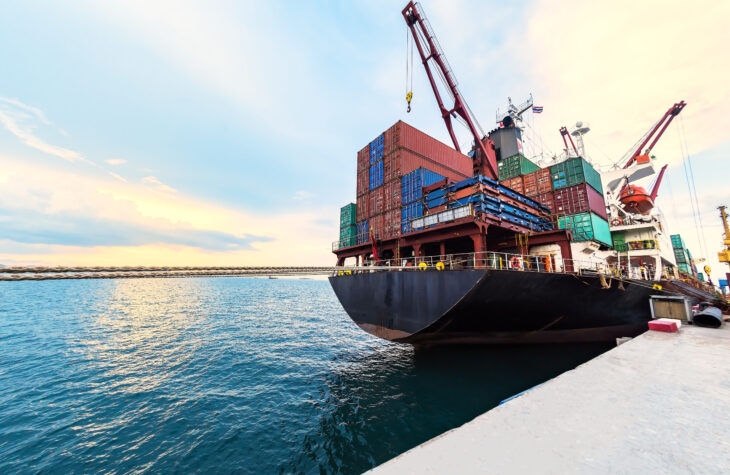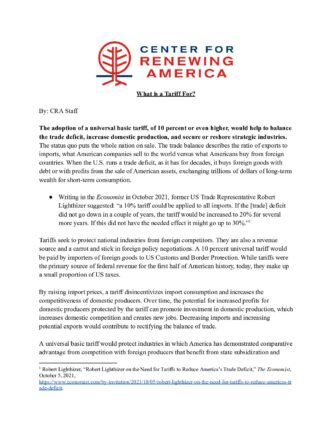
One Pager: What is a Tariff For?
The adoption of a universal basic tariff, of 10 percent or even higher, would help to balance the trade deficit, increase domestic production, and secure or reshore strategic industries. The status quo puts the whole nation on sale. The trade balance describes the ratio of exports to imports, what American companies sell to the world versus what Americans buy from foreign countries. When the U.S. runs a trade deficit, as it has for decades, it buys foreign goods with debt or with profits from the sale of American assets, exchanging trillions of dollars of long-term wealth for short-term consumption.
- Writing in the Economist in October 2021, former US Trade Representative Robert Lighthizer suggested: “a 10% tariff could be applied to all imports. If the [trade] deficit did not go down in a couple of years, the tariff would be increased to 20% for several more years. If this did not have the needed effect it might go up to 30%.”1
Tariffs seek to protect national industries from foreign competitors. They are also a revenue source and a carrot and stick in foreign policy negotiations. A 10 percent universal tariff would be paid by importers of foreign goods to US Customs and Border Protection. While tariffs were the primary source of federal revenue for the first half of American history, today, they make up a small proportion of US taxes.
By raising import prices, a tariff disincentivizes import consumption and increases the competitiveness of domestic producers. Over time, the potential for increased profits for domestic producers protected by the tariff can promote investment in domestic production, which increases domestic competition and creates new jobs. Decreasing imports and increasing potential exports would contribute to rectifying the balance of trade.
A universal basic tariff would protect industries in which America has demonstrated comparative advantage from competition with foreign producers that benefit from state subsidization and create space in which the innovative people of the United States can develop comparative advantage in desirable and new industries. Moreover, by restoring or buttressing shrinking manufacturing industries and protecting the American market as a whole, the nation can retain the skills and inputs needed for innovation and growth.
Upstream and downstream to major industrial endeavors, ranging from rocket ships and airplanes to cars and ships, are a host of other products that require the specialized labor and knowledge cultivated by complex manufacturing. Concentrating more of the production stream domestically can create a virtuous cycle in which efficiency and productivity are improved in local feedback loops of talent and investment; think of, for example, Silicon Valley. Additional large tariffs targeting Chinese imports will help hasten American economic independence from China.
The long term consequences of opening the American market to the world without protections, especially to China, are now clear, hollowing out America’s industrial base and depressing the wages of the many for the benefit of the few who could take advantage of globalization. The strip mining of the country via trade deficits and offshoring must be stopped.
End Notes
- 1. Robert Lighthizer, “Robert Lighthizer on the Need for Tariffs to Reduce America’s Trade Deficit,” The Economist, October 5, 2021, https://www.economist.com/by-invitation/2021/10/05/robert-lighthizer-on-the-need-for-tariffs-to-reduce-americas-trade-deficit ↩︎




